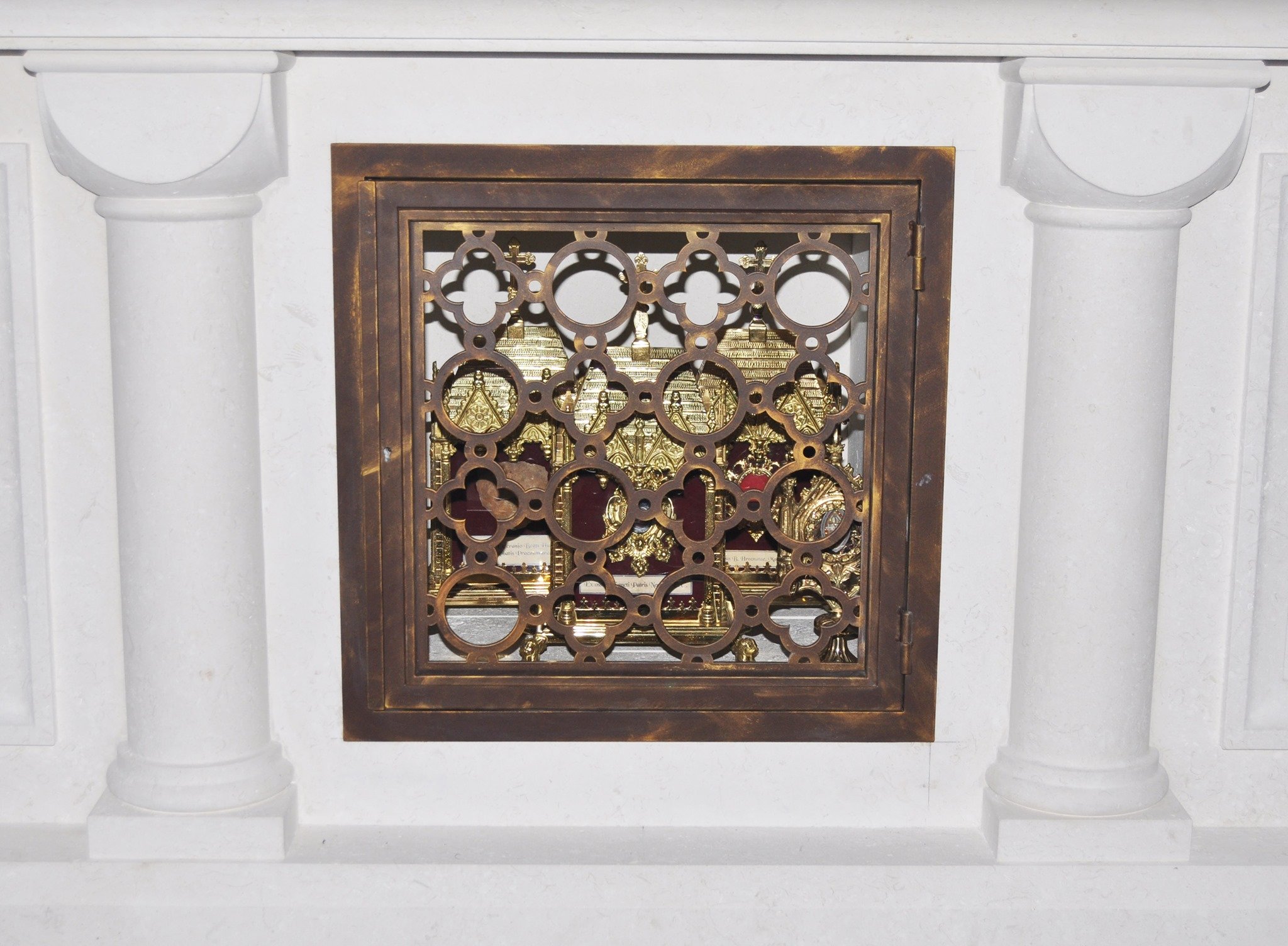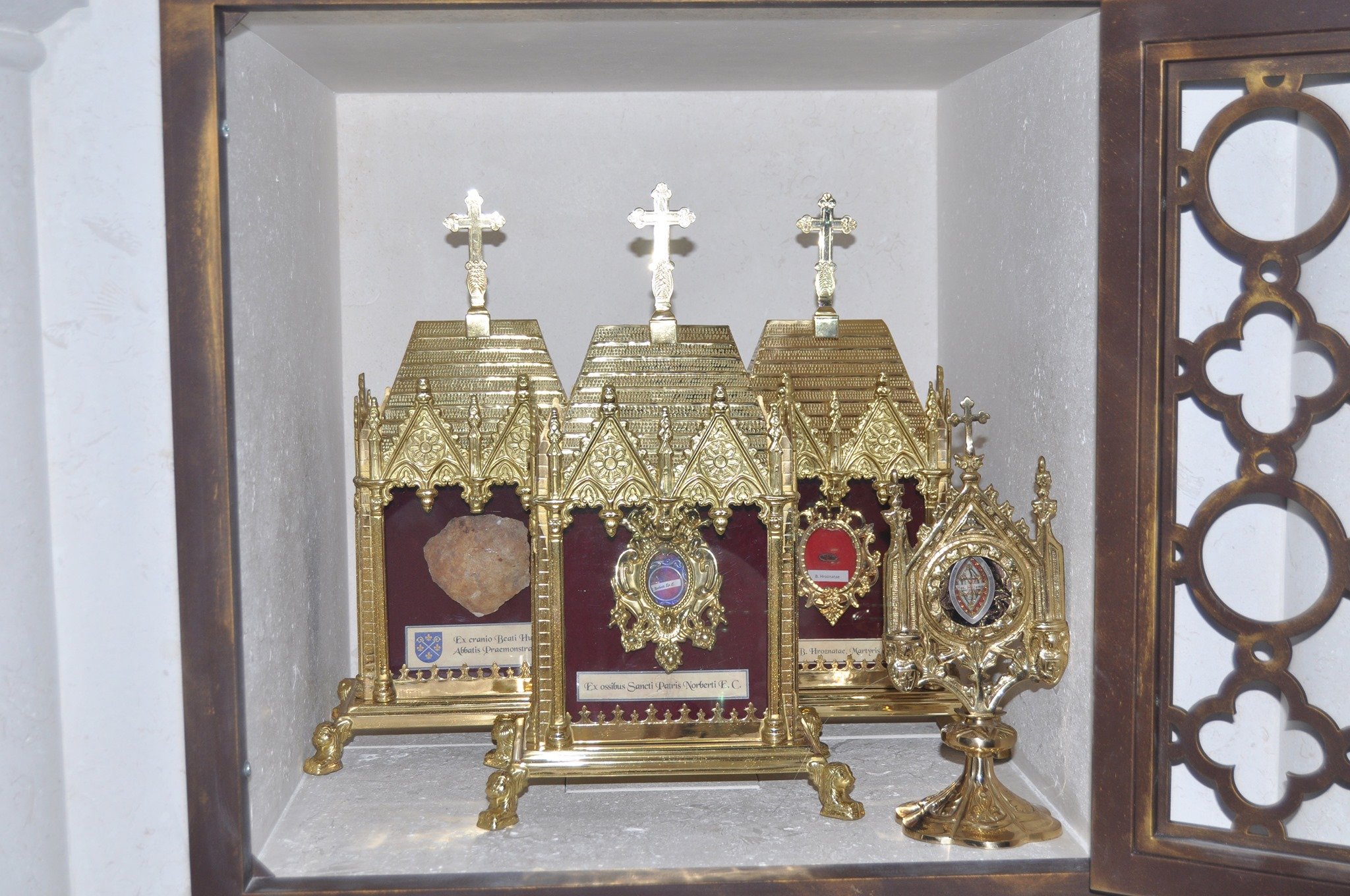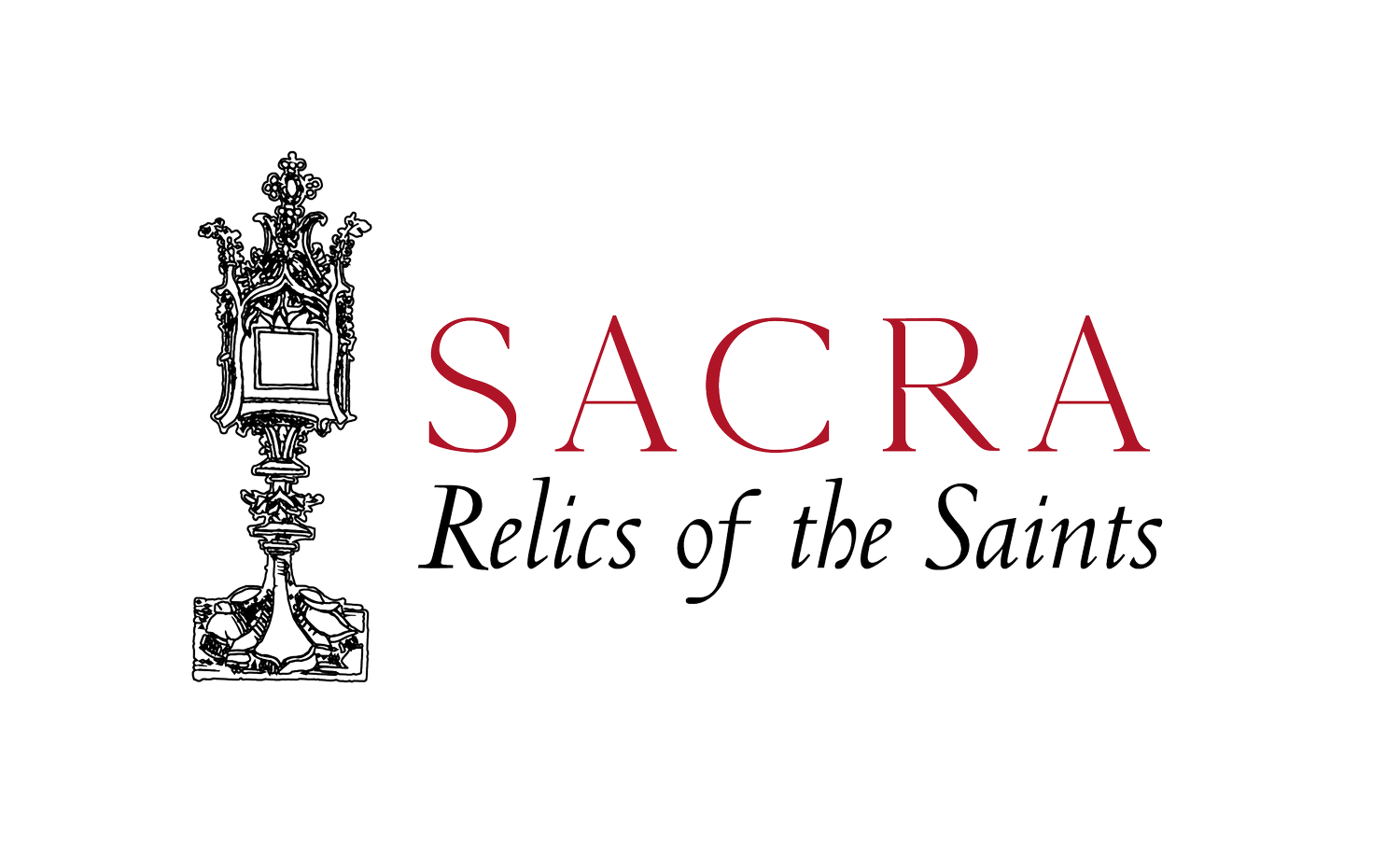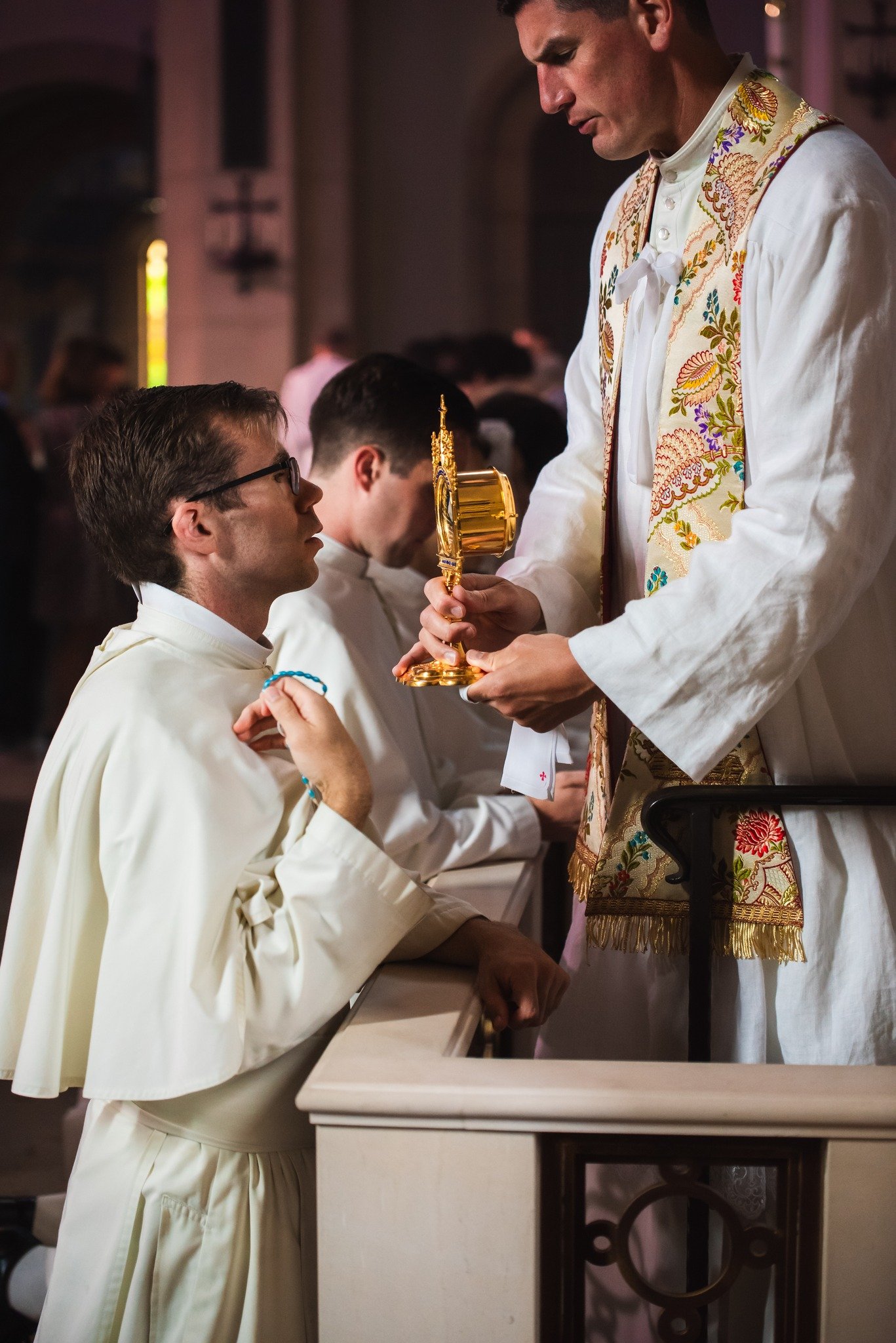A Saint Finds His Way Home
The year is 1120, a time of much reform in the church, a time that needed much reform. Clergy had become lax, corrupt, and immoral. The faithful had little knowledge of the Faith. Norbert, under command from the Pope, and following the promptings of God, founded a new religious congregation on Christmas Day. The Canons of Prémontré would spend their lives in a single place, praising God and caring for souls. A canon is a religious who takes vows and is attached to a particular church, keeping the cycle of the Divine Office there.
Initially the men lived in huts surrounding a small chapel, but time soon came to build something larger, to better suite worship and accommodate his growing community. We find Norbert on the road Cologne Cathedral to request relics for his new church. For the church to be consecrated, there would need to be relics placed in the altar.
Norbert had commended his endeavour in prayer, and asked his companions to fast and pray, so that his community might be blessed with relics for their new church. The cathedral held the relics of St Gereon, who was a Roman soldier, martyred for his Christian faith. He was beheaded, at the upper lip, and his head thrown into a well. Over this well was dedicated an altar to the solider saint, but the location of the rest of his body had been lost. Devotion to this saint had spread widely, even as far as England.
During the night, the location of St Gereon’s body was revealed in a vision to Norbert’s company. Because of his sincerity and devotion, Norbert was allowed to dig in an otherwise unmarked place in the floor of the monastery.
The men dug where Norbert told them. What they found astonished the cathedral clergy: a body, complete but missing the head past the upper lip, wrapped in green cloth, a cross embroidered on the front of his robe, next to an expensive, yet covered, grave stone. The body had been buried with great care. The man was laid to rest dressed as a soldier, wearing his spurs.
These details, along with the very specific place his head had been severed, left no doubt for those present. This was St Gereon:
‘This is our master and venerable patron, St. Gereon, who has been sought for many years both by us and our predecessors but could not be found because of our sins.’
The body, which had lay hidden for 800 years, was solemnly exhumed and placed in honour, and some of the relics were given in gratitude for his aid for his new church. Norbert’s congregation is known today as the Norbertines, or Premonstratensians (after the Latin for the city of Prémontré), and the spiritual sons and daughters of this saintly founder continue to pray for the world in their churches.
St Gereon showed himself a heavenly friend of Norbert and his companions, he found his way back to those who had prayed to him. Almighty God did not want his relics to be lost, but for them to be held in reverence. His feast is still solemnly kept by the Norbertine Order on 10 October.
✠
The year is 2023, a convent closes its doors, the nuns are aging and need to go to care facilities. They give their relics to an associate of Sacra—here we’ll call him Brother J.—for safe-keeping. Brother J. sorts through the relics and comes upon some larger, more obscure relics. In a conversation with Brother J., he asked me, ‘Do you know anything about a St Gereon?’ ‘You’re kidding me,’ I replied, ‘there is only one St Gereon.’
I had recently undertaken some larger relic projects with the Norbertines of St Michael’s Abbey in California. The Norbertines recently completed construction of an amazing new abbey church, which has a side altar depicting St Gereon, and an icon of his appearance to St Norbert in another chapel. Like many, this was the first I’d heard of St Gereon, but I loved the story, and it stuck with me.
The Abbot of St Michael’s Abbey dedicates an altar in the crypt of their new church to St Gereon.
The Canons of St Michael’s have a great devotion to St Gereon, in addition to the two chapels mentioned, the community even boasts a fr. Gereon, one member of their community bears his religious name. Despite 900 years of devotion to the saint in their order, however, the Norbertines did not have any relics of this beloved saint. They did have a smaller, very ornately-prepared relic of one of his fellow soldiers who were martyred, which they treasured.
Brother J. had taken care of this sizable relic of St Gereon, along with documentation tracing its origin to, you guessed it, Cologne Cathedral. The relic had been lovingly kept, but needed some serious work.
The substantial relic of St Gereon, in need of a good cleaning.
When I held the relic, I was dumb-founded. This was one of the very relics recovered by St Norbert in the 12th century. I knew that this relic had to be with the Norbertines.
In the months that followed, Sacra arranged for the relic to be given to the Norbertines of St Michael’s Abbey, thanks to the kindness of Brother J. The relic was lovingly cleaned and prepared by a member of the community, Fr Norbert, a dear friend of Sacra, and a great lover of relics, just as his namesake.
The relic is set into a beautiful reliquary with the relic of St Gereon’s martyr companion, and adorned with precious stones and symbols of the Norbertine Order.
This reliquary, along with other significant relics of the community, is placed inside the grille of the main altar, the focal point for the community’s prayer, the same prayers envisioned by St Norbert, to bring healing and reform to a world in sore need of them.



On his feast day, 10 October, the relic of St Gereon, once again at home among the sons of St Norbert, is brought out at Solemn Vespers for veneration, and to bless the faithful there present.
Ss Norbert & Gereon, pray for us.







